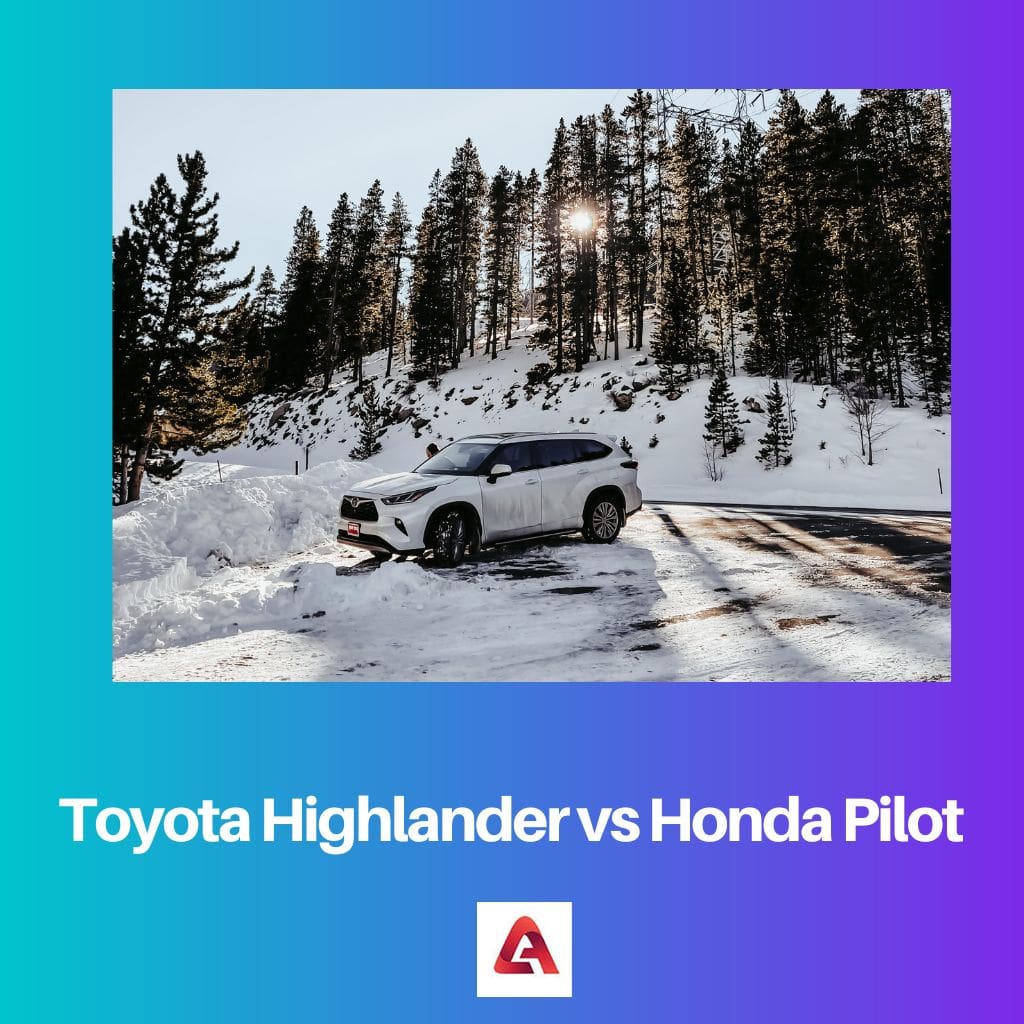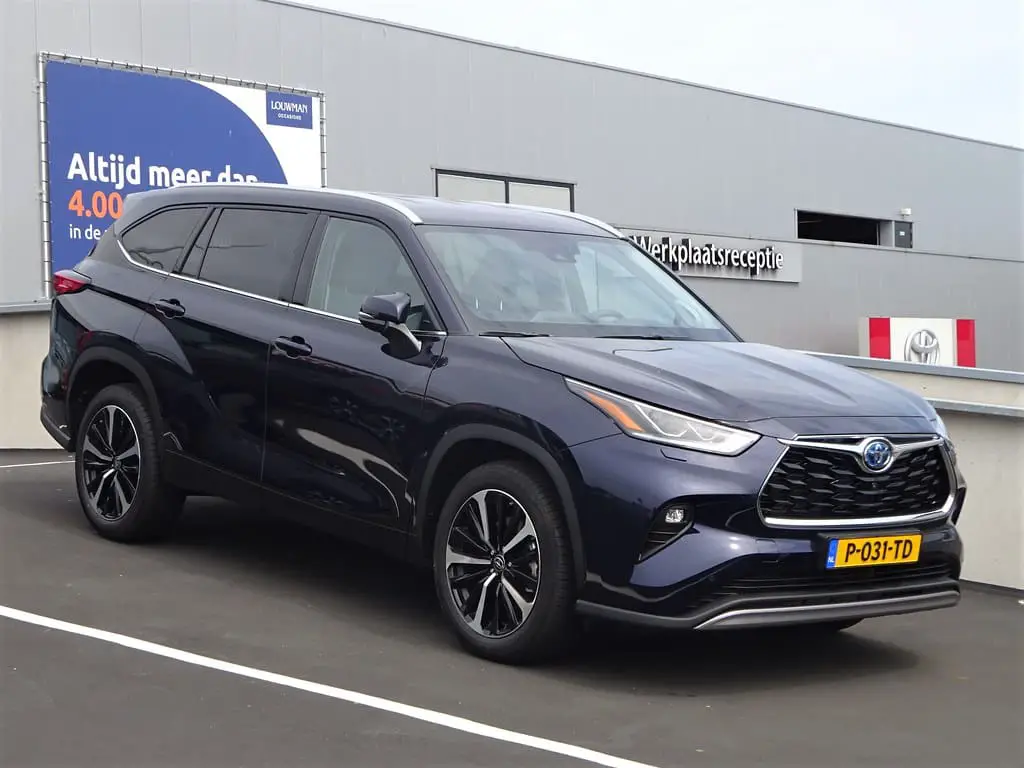With so many choices, the mid-size SUV class is likely the most aggressive in the marketplace. The sheer amount of alternatives in the sector, good ones at that—makes it even more difficult for the buyer to choose one.
The Honda Pilot and the newly updated Toyota Highlander are two of the segment’s top crossovers.
Key Takeaways
- Toyota Highlander offers better fuel efficiency than Honda Pilot, providing a more eco-friendly option.
- Honda Pilot has more spacious seating for up to eight passengers, while the Highlander seats seven.
- Toyota Highlander features a more luxurious and comfortable interior, whereas the Honda Pilot has a more rugged and practical design.
Toyota Highlander vs Honda Pilot
The difference between Toyota Highlander and Honda Pilot is that Highlander narrowly edges ahead because of its affordable pricing and basic equipment. It is a little smaller than Pilot, but it is certainly large enough for a family of 5 with an incidental guest. The Pilot’s major asset is rear-seat entertainment, but that can be solved with a tablet.

Toyota equips the Highlander with a variety of attractive characteristics, the most notable of which is the 12.3-inch touchscreen infotainment interface. The Highlander also comes standard with a complete leather interior, 10-way customizable warmed and ventilated front seats, and warmed rear captain seats.
Although bucket seating and leather interiors are offered in the Limited version, warmed rear seats are only provided in the Platinum trim.
The Honda Pilot has three rows of seating for seven or eight people, with second-row captain’s seats available only on higher specification levels. Passenger capacity is ample, while cargo capacity varies from 16.5 cubic feet behind the third row to 83.9 cubic feet with all seating flat.
Comparison Table
| Parameter of comparison | Toyota Highlander | Honda Pilot |
|---|---|---|
| Passenger Volume | 141.3 cubic feet | 152.9 cubic feet |
| Cargo volume | 84.3 cubic feet | 83.9 cubic feet |
| Fuel Economy | 24 mpg (21 city/29 highway) | 23 mpg (20 city/27 highway) |
| Infotainment system | 12.3-inch | 8.0-inch system |
| Rear entertainment screen | Not available | Available |
What is Toyota Highlander?
The Toyota Highlander has a moderately roomy cabin, an expanded array of standard safety systems, and improved safety ratings. When correctly outfitted, it also has a remarkably effective towing ability of 5,000 pounds.
However, the midsize SUV segment is crowded with brilliance, so what truly distinguishes it is the hybrid powertrain, which is featured on all models, along with the new sporty XSE model.
It made the Highlander a tempting alternative among major competitors for purchasers who don’t want to give up fuel efficiency for extra room. The restricted cargo capacity behind the third row is one of the primary drawbacks highlighted in the analysis.
If families have to transport children and belongings at the same time, the 16 cubic feet of storage will surely be a cause of annoyance.
Lower Highlander trims come standard with an 8.0-inch touchscreen and cloth seating. Nonetheless, Android Auto and Apple CarPlay come included on all models, as does three-zone temperature control.
In regards to security, Toyota Safety Sense 2.0 is integrated all over the Highlander lineup. It has a collision prevention system, pedestrian and cyclist detection, lane-keeping assistance with steering control, and a plethora of other functions.
But, blind spot recognition with cross-traffic is only offered on the LE trim and higher.

What is Honda Pilot?
Numerous folks recommend the Honda Pilot as an SUV. The Pilot is propelled by a 3.5-liter V6 engine.
Honda reduced the number of transmission options for the new model. The six-speed automatic found in cheaper models have been replaced with a nine-speed automatic across the line.
Customers can choose between front-wheel drive and all-wheel drive.
Furthermore, the tallest riders will have plenty of room in the Pilot. It just shadows its opponent with 40.1 inches of headspace without the sunroof and 39.5 inches with that as well.
The shoulder room in the first two rows is 62 inches. The third row is however two inches wider.
Leg space in the first two rows is down due to the relatively short wheelbase, at 40.9 inches and 38.4 inches, respectively, but the longer length reveals its edge in the third row, offering nearly four inches more legroom than its competition.
The lower model also lacks the usual 8-inch touchscreen with Apple CarPlay and Android Auto. The EX-L includes leather seats and a motorized liftgate.
At the Touring grade, captain’s chairs, GPS, rear-seat infotainment, and a Wi-Fi hotspot are accessible. All-wheel-drive vented front seating, and a warmed steering wheel are standard on the top two versions.

Main Differences Between Toyota Highlander and Honda Pilot
- Passenger volume for Toyota Highlander is 141.3 cubic feet while for Honda Pilot it is better with 152.9 cubic feet.
- Toyota Highlander has a cargo volume of 84.3 cubic feet and for Honda Pilot, it is 83.9 cubic feet.
- Toyota Highlander gives a fuel efficiency of 24 mpg with 21 in the city and 29 on the highway. Honda Pilot, on the other hand, gives an efficiency of 20 in city and 27 for highway, with an overall efficiency of 23 mpg.
- Both the cars have an infotainment system. But the difference is that Highlander has a 12.3-inch system while Pilot has an 8.0-inch system.
- Toyota Highlander is not equipped with a rear entertainment screen while Honda Pilot models have it.
- https://go.gale.com/ps/i.do?id=GALE%7CA172377281&sid=googleScholar&v=2.1&it=r&linkaccess=abs&issn=03190714&p=AONE&sw=w
- https://www.sciencedirect.com/science/article/pii/S1361920908001090
